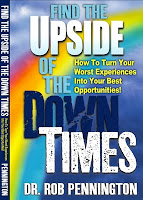He honestly believed that he was destined to have awful things happen to him and that he had no control over the outcomes.
ALL of us experience unexpected, negative events in our lives. When you have to deal with this kind of challenge, it’s easy to feel that life’s against you. The difficulties are right in your face, so you focus on them and completely overlook any positive aspects of the situation. You can get discouraged and lose sight of the choices you do have.
It turns out that our beliefs and attitudes dramatically affect what happens to us.
When you’re pessimistic, you anticipate and dwell on the worst-case scenario. You create a movie in your mind of the result you don’t want and play it over and over.
But focusing exclusively on the negatives like this can actually cause your worst fears to be realized. You can end up feeling like a victim and concluding there’s nothing you can do.
Stopping this vicious cycle requires a shift from pessimism to optimism.
Now that doesn’t mean putting on rose-colored glasses and pretending that all is right with the world. It means learning to recognize that every situation in life has both positives and negatives.
With optimism, you see both aspects, but you make a conscious decision to emphasize possibilities and opportunities instead of disasters and problems. You take responsibility for things you can control, and you don’t feel bad or guilty about areas outside of your control.
The attitude you bring to a situation strongly influences its outcome. If you’re convinced things will turn out badly, you probably won’t take steps to achieve the best result.
Open your mind to the positives as well as the negatives, and your worldview will be more complete. If you remember what you have going for you, it will have a major impact on the way you respond and the outcome you achieve.
Take inspiration this 2-minutes clip with Dr. Martin Seligman, who explains the difference between an optimist and a pessimistic – and why the optimist demonstrates greater resilience.
“One of the things I learned the hard way was that it doesn't pay to get discouraged. Keeping busy and making optimism a way of life can restore your faith in yourself.”
- Lucille Ball, American comedian (1911-1989)







